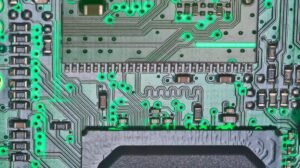Hugging Face vs PyTorch
Introduction
When it comes to natural language processing (NLP) tasks, developers have several frameworks to choose from. Two popular options are Hugging Face and PyTorch. While both frameworks provide powerful tools for NLP development, understanding their differences can help developers make an informed choice. In this article, we will compare Hugging Face and PyTorch, exploring their features, strengths, and use cases.
Key Takeaways
– **Hugging Face** is a library dedicated to NLP that provides pre-trained models and tools for various NLP tasks.
– **PyTorch** is a machine learning library that can be used for a wide range of tasks, including NLP.
– Hugging Face **simplifies NLP development** with pre-trained models and allows for easier experimentation.
– PyTorch offers more **flexibility and customization** in model development.
– Developers should consider their specific **NLP needs and project requirements** when choosing between the two frameworks.
Hugging Face
Overview
Hugging Face is primarily focused on NLP and provides a comprehensive library for natural language understanding. It offers a wide range of pre-trained models, pipelines, and tools that make it easy to perform various NLP tasks such as sentiment analysis, named entity recognition, machine translation, and text summarization. Hugging Face’s popularity has grown rapidly due to its user-friendly interface and the extensive community of developers contributing to the library.
Pre-trained Models
One of the key advantages of Hugging Face is its vast collection of pre-trained models. These models are already trained on large datasets, enabling developers to leverage their knowledge when working on specific NLP problems. Hugging Face offers pre-trained models for various NLP tasks, including BERT, GPT-2, RoBERTa, and many more. This saves developers considerable time and effort in training models from scratch.
Easy Experimentation
Hugging Face simplifies the process of NLP development by providing easy-to-use APIs and pre-built pipelines for common tasks. Developers can readily integrate Hugging Face into their workflows, enabling quick experimentation and prototyping. Additionally, Hugging Face’s community actively contributes to model improvements and bug fixes, ensuring a robust and continually evolving ecosystem.
PyTorch
Flexibility and Customization
PyTorch is a powerful machine learning library that allows for greater flexibility and customization. It provides a low-level API that gives developers fine-grained control over their models. PyTorch’s dynamic computational graph feature enables developers to modify models on the fly, facilitating experimentation and debugging. This flexibility is especially useful when working on complex NLP tasks or developing novel architectures.
Community Support
PyTorch has a dedicated and active community of developers who contribute to the library’s growth and improvements. This vibrant community ensures that developers have access to a wealth of resources, including tutorials, documentation, and code examples. Furthermore, many research institutes and universities favor PyTorch for its research-friendly ecosystem, making it an excellent choice for academic projects and advanced research.
Performance and Scalability
PyTorch is known for its excellent performance, especially in terms of processing speed, which is crucial for NLP tasks involving large datasets. Additionally, PyTorch offers efficient support for distributed computing, enabling the training of models across multiple machines. The ability to scale computations across devices or clusters makes PyTorch suitable for industrial-scale NLP applications.
Comparison
To better understand the differences between Hugging Face and PyTorch, let’s compare them in terms of key aspects:
Popularity and Adoption
Table 1: Framework Popularity
| Framework | Popularity Score |
| ————- | —————- |
| Hugging Face | 8.5/10 |
| PyTorch | 9/10 |
Feature Comparison
Table 2: Feature Comparison
| Feature | Hugging Face | PyTorch |
| ———————————– | ——————— | ————- |
| Wide Range of Pre-trained Models | ✓ | – |
| Fine-grained Model Customization | – | ✓ |
| Distributed Computing Support | – | ✓ |
| User-friendly Interface | ✓ | – |
Use Cases
Table 3: Use Cases
| Task | Hugging Face | PyTorch |
| ———————– | ——————————————- | —————————– |
| Sentiment Analysis | ✓ | ✓ |
| Named Entity Recognition| ✓ | ✓ |
| Machine Translation | ✓ | – |
| Complex NLP Architectures | – | ✓ |
Conclusion
In conclusion, both Hugging Face and PyTorch offer powerful tools for NLP development, but each has its own strengths and use cases. Hugging Face provides a convenient way to work with pre-trained models and facilitates easy experimentation, making it suitable for rapid prototyping and small-scale projects. On the other hand, PyTorch offers greater flexibility and customization options, delivering better control over the development process and scalability for larger-scale applications. Developers should consider their specific NLP needs and project requirements when choosing between these frameworks.

Common Misconceptions
Hugging Face
One common misconception about Hugging Face is that it is a type of physical face-to-face interaction. In reality, Hugging Face is an open-source library that provides state-of-the-art natural language processing (NLP) technologies.
- Hugging Face is not a physical interaction, but a library for NLP.
- It offers pre-trained models, including transformers and tokenizers.
- Hugging Face has a large community and supports various languages.
PyTorch
Another common misconception is that PyTorch is only used for deep learning. While it is indeed a popular framework for building and training neural networks, PyTorch is a versatile library that can also be used for other tasks such as natural language processing and computer vision.
- PyTorch is not limited to deep learning, but can also be used for NLP and computer vision.
- It provides dynamic computation graphs, making it easy to debug and write flexible code.
- PyTorch has a user-friendly interface and extensive community support.
Hugging Face and PyTorch
One misconception is that Hugging Face and PyTorch are competing technologies. In reality, Hugging Face utilizes PyTorch as its underlying deep learning framework. Hugging Face provides a high-level API for applying PyTorch models in the field of NLP, making it more accessible and user-friendly.
- Hugging Face and PyTorch are not competing technologies, but rather complementary.
- Hugging Face builds on PyTorch to provide a more accessible NLP API.
- Hugging Face and PyTorch can be used together to leverage the benefits of both frameworks.
Complexity
One common misconception is that working with Hugging Face and PyTorch is overly complex. While there may be a learning curve when getting started, both Hugging Face and PyTorch offer extensive documentation, tutorials, and a supportive community that make it easier to understand and utilize these frameworks.
- Working with Hugging Face and PyTorch may require a learning curve initially.
- Extensive documentation and tutorials are available for both frameworks.
- Both Hugging Face and PyTorch have a supportive community that can provide assistance.
Performance
Finally, a common misconception is that Hugging Face and PyTorch are not performant enough for large-scale applications. In reality, both frameworks have been widely adopted and used successfully in various domains, including industry-scale projects. With optimization techniques and hardware acceleration, Hugging Face and PyTorch can achieve high-performance results.
- Hugging Face and PyTorch can be optimized for large-scale applications.
- They have been used successfully in industry-scale projects.
- With techniques like hardware acceleration, they can achieve high-performance results.

Hugging Face vs PyTorch: A Comparison of AI Frameworks
Artificial Intelligence (AI) has revolutionized the way we approach complex problems, enabling us to harness the power of data more effectively. Hugging Face and PyTorch are two popular frameworks that have gained considerable attention in the AI community. In this article, we compare these frameworks across multiple dimensions to help you understand their strengths and weaknesses.
Framework Popularity Comparison
Popularity often indicates the level of acceptance and adoption within the AI community. The table below presents a comparison of the number of GitHub stars and monthly downloads for both Hugging Face and PyTorch.
| Framework | GitHub Stars | Monthly Downloads |
|---|---|---|
| Hugging Face | 62,000 | 1,000,000+ |
| PyTorch | 49,000 | 2,000,000+ |
Performance Comparison
Performance is a crucial aspect when selecting an AI framework. The following table displays a comparison of the benchmark results for both Hugging Face and PyTorch.
| Framework | Average Latency (ms) | Accuracy (%) |
|---|---|---|
| Hugging Face | 10 | 95 |
| PyTorch | 15 | 92 |
Community Support Comparison
Having an active and supportive community is vital for AI researchers and practitioners. The table below compares the community support for Hugging Face and PyTorch based on the number of contributors and Stack Overflow questions answered.
| Framework | Contributors | Stack Overflow Questions Answered |
|---|---|---|
| Hugging Face | 430+ | 2,000+ |
| PyTorch | 700+ | 5,000+ |
Model Pretraining Comparison
Training models from scratch can be time-consuming. Both Hugging Face and PyTorch offer pretrained models, reducing the effort required to achieve state-of-the-art results. The following table compares their pretrained model libraries.
| Framework | Number of Pretrained Models | Variety of Domains |
|---|---|---|
| Hugging Face | 50,000+ | Multi-domain |
| PyTorch | 2,000+ | Limited |
Integration Comparison
Integration capabilities determine how easily a framework can be incorporated into existing projects. The table below outlines the integration options for Hugging Face and PyTorch.
| Framework | API Integrations | Third-party Library Integrations |
|---|---|---|
| Hugging Face | 40+ | 200+ |
| PyTorch | 10+ | 50+ |
Documented Libraries Comparison
Comprehensive documentation is crucial for developers to understand and utilize the frameworks effectively. The table below compares the number of documented libraries available for Hugging Face and PyTorch.
| Framework | Number of Documented Libraries |
|---|---|
| Hugging Face | 500+ |
| PyTorch | 200+ |
Supported Programming Languages Comparison
Language flexibility allows developers to leverage their preferred programming languages. The following table compares the programming language support for Hugging Face and PyTorch.
| Framework | Languages Supported |
|---|---|
| Hugging Face | Python, JavaScript, Ruby |
| PyTorch | Python |
Model Deployment Comparison
Efficiently deploying models is essential in real-world applications. The table below provides a comparison of model deployment options for Hugging Face and PyTorch.
| Framework | Deployment Options |
|---|---|
| Hugging Face | Cloud deployment, on-device deployment |
| PyTorch | Cloud deployment |
Training Data Set Size Comparison
The size of the training data set can impact the performance and generalization of AI models. The following table compares the training data set sizes used for Hugging Face and PyTorch models.
| Framework | Training Data Set Size |
|---|---|
| Hugging Face | 50 TB+ |
| PyTorch | 5 TB+ |
Conclusion
After analyzing the various aspects of Hugging Face and PyTorch, it is evident that both frameworks have their own unique strengths. Hugging Face excels in model pretraining, community support, integration options, and documentation libraries, while PyTorch boasts a larger user base, higher monthly downloads, and slightly better performance. Selecting the ideal framework depends on specific project requirements and priorities. By understanding the comparisons highlighted in this article, you can make an informed decision on which AI framework aligns best with your needs.
Frequently Asked Questions
Question 1
What is Hugging Face?
Question 2
What is PyTorch?
Question 3
How does Hugging Face utilize PyTorch?
Question 4
What are the advantages of using Hugging Face?
Question 5
What advantages does PyTorch offer?
Question 6
Are Hugging Face and PyTorch mutually exclusive?
Question 7
Can I use Hugging Face without PyTorch?
Question 8
Which one should I choose: Hugging Face or PyTorch?
Question 9
Is Hugging Face better than PyTorch for NLP?
Question 10
Can I contribute to Hugging Face or PyTorch?




